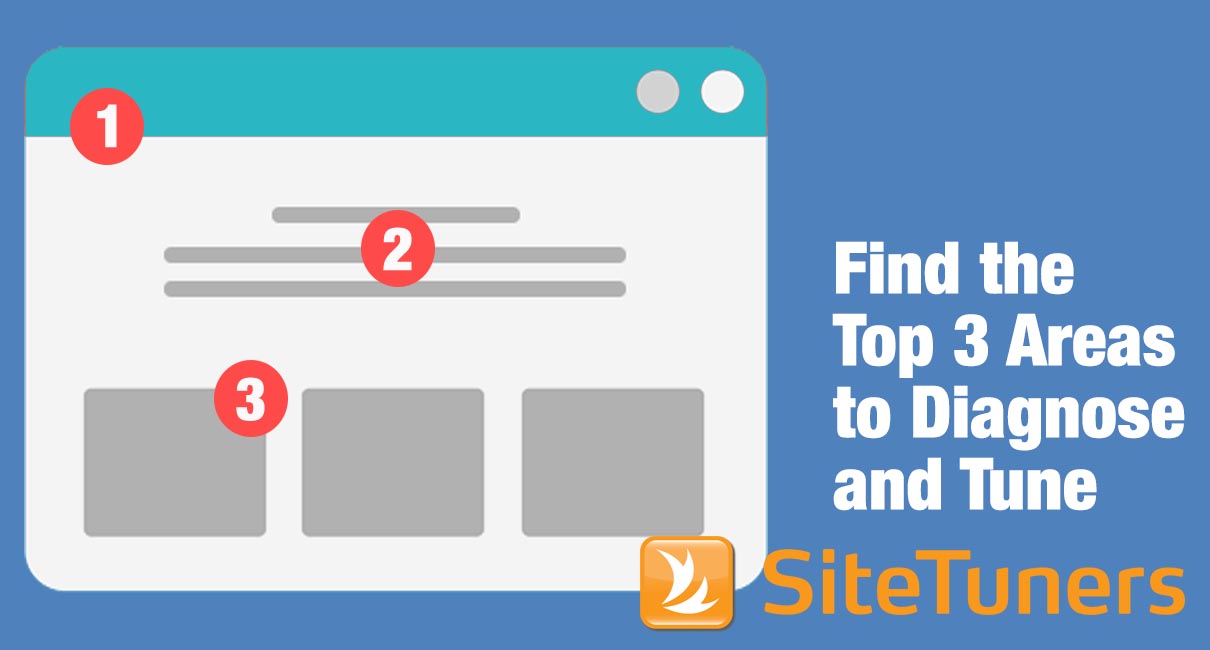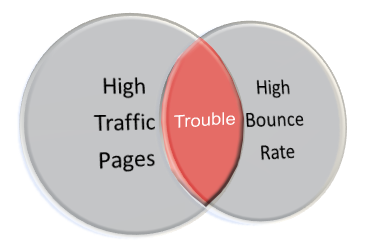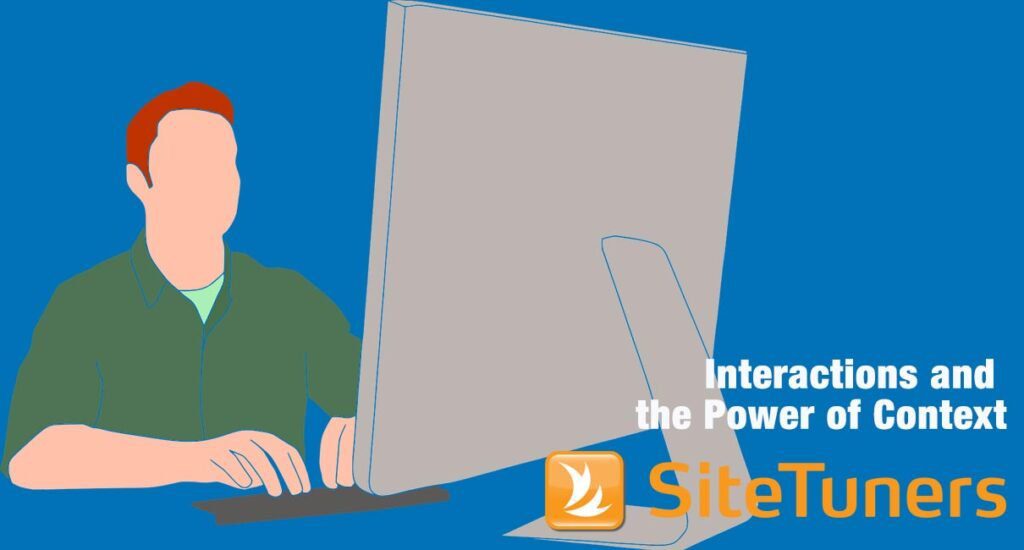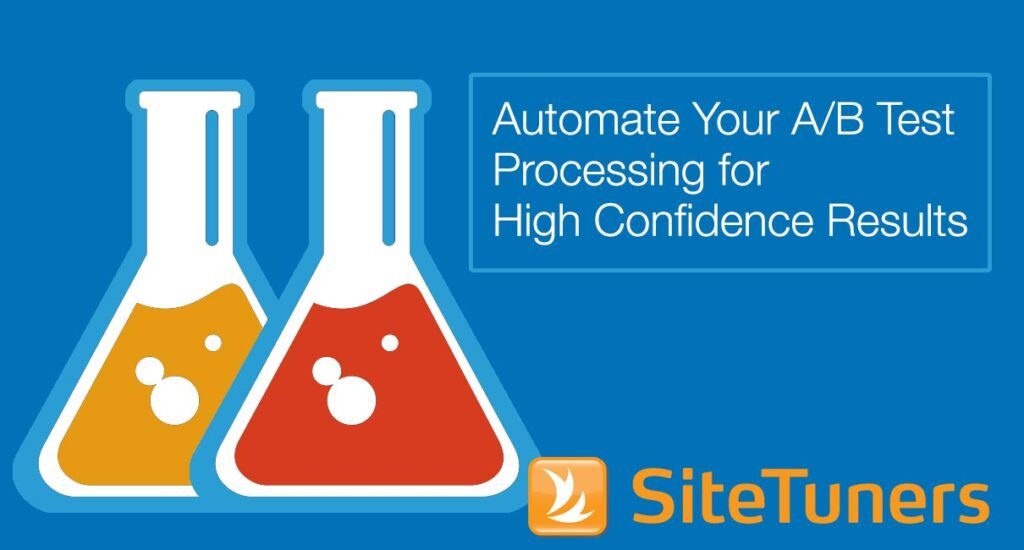
Depending on your landing page goals and the types of conversion paths you have, the way you hunt for what’s wrong may be slightly different. We’re going to try and keep it general here. You do not need to run A/B tests the thousands of pages on your entire site (that’s expensive and prohibitive) so you will need to hone in on two areas:
• Single purpose landing pages and the funnel drop-offs
• Problem pages within the rest of the site
The first is about careful conversion planning for the paid and/or highly controlled traffic. The latter is about managing by exception.
1. High Traffic Low Performers

What you want to find are the leaky buckets for high traffic pages – pages that a lot of visitors tend to visit, but display high bounce rate.
Use whatever clickstream tool you have in place to export reports with visits and bounce rate, then find the intersection.
If you’re using Google Analytics, there’s a feature called “Weighted Sort” that can find this area for you. Click on Bounce Rate on a report that has both visits and bounce rate, then above, change the sorting type from Default to Weighted.
That will instantly show you the low-hanging fruit.
2. Browser and Screen Resolution Issues
Web analytics software typically carry reports and filters about the operating system, the browser, and screen resolution. The general idea is that you should be serving as good an experience as possible for the majority of your visitors.
Tim Ash, CEO of SiteTuners, likes to compare this to how car manufacturers design for car seats.
• If you’re in the top 2.5% of the tallest people, or in the 2.5% of the shortest people, you may not be very comfortable
• Car seats will be great for 95% of the market
For screen resolution, anyone using 800 x 600 may not have a great experience and have lower visit durations, and higher exit rates. Likewise, if you’re using technology on your site that older versions of IE, FireFox, Chrome and other popular browsers do not support, then they may display the same things. However, if you find those same figures on 1024 x 768 or higher versions of browsers, you can run a filter that shows pages cross-referenced by screen resolutions and browsers, and you can begin A/B tests on the worst-performers.
3. Mismatched Content
When paid traffic is directed to the web site, one of two scenarios usually follow:
• Traffic is sent to landing pages designed for the campaign
• The traffic is sent to the most relevant page on the web site
In the latter scenario, the pages will not be poised to convert, and are likely to show higher bounce rates, higher exit rates, and lower average visit duration.
You can use the campaigns feature if it’s available on your clickstream tool, or create a filter or regular expression for only pages used with paid traffic. Make sure your report has bounce rate, exit rate, and average visit duration. Find the low-hanging fruit, and test from there.
Next: “Nobody Reads Your Page.” SiteTuners covers how the brain works and what that means for usability.
Take your conversions to the next level.Learn how our experts at SiteTuners can help kickstart your conversion rate optimization process or get better results from your CRO efforts. Give us 30 minutes, and we’ll show you a roadmap to your digital growth! |


